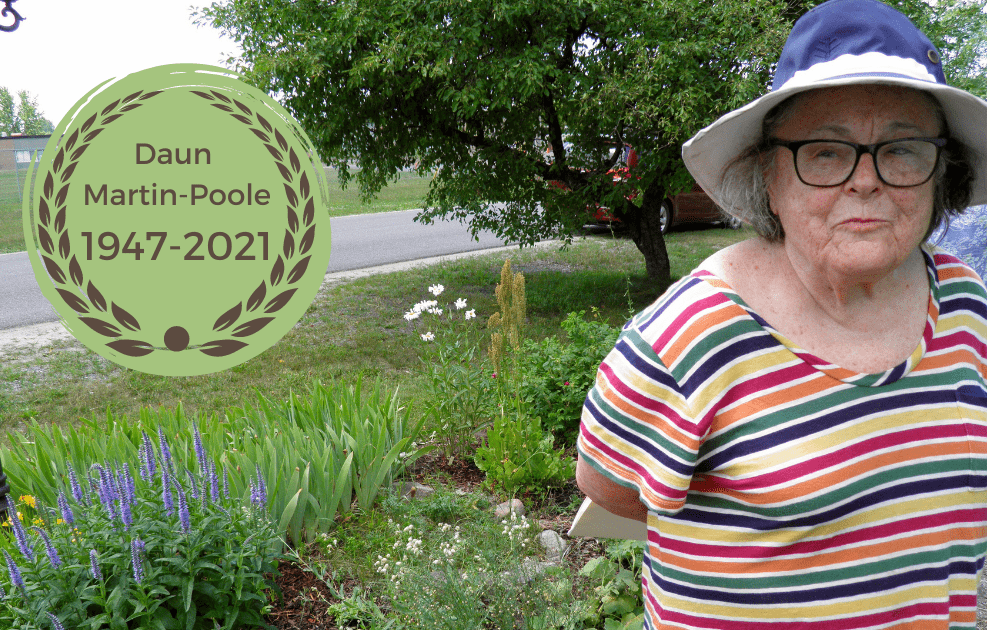In September we said goodbye to Daun Martin-Poole. Daun’s life was well-lived, and included a stint as an innkeeper in San Diego and as a resident in remote Alaska where she had to haul in drinking water! When she finally settled in the North Country, Daun became a dedicated volunteer in her Dekalb community, at Extension, and beyond.
Daun was an active Master Gardener Volunteer (MGV) until this year, but her involvement at Extension predated that role. She was a passionate 4-H Project Leader who greatly enjoyed sharing her baking and knitting talents with youth. She excelled as both a 4-H public speaking evaluator and St. Lawrence County Fair judge, where her expertise was put to work in the home arts division. Daun also served two terms on the Extension Association’s Board of Directors from 2007 to 2012, during which she functioned as a Board Representative to the 4-H Youth Development Program.
Daun trained as a Master Gardener Volunteer with the county’s first cohort in 2013. Among other projects, she was dedicated to improving and maintaining the Dekalb Historical Garden alongside gardeners Bryan Thompson and Bonnie Gardinier. Bryan said of her “Daun was one of the strongest, most resilient women I have ever known. She just never gave up. Facing incurable macular degeneration, she continued to work in my office wearing glasses and using a magnifying glass at the computer. When she got her diagnosis of breast cancer she continued to come to work and keep busy. There was almost no stopping her.”

Members of the Master Gardener program plan to create a new pollinator garden over the next year alongside the Local Foods office at the Extension Learning Farm in Canton. We will dedicate this life-giving space to Daun, and honor her by including plants that she enjoyed and that mirror her resilience. One such plant is a lilac, which are often found in clearings where houses once stood 100 years prior. We will also plant black hollyhocks, which were a popular cultivar in the 1800s, which Daun sought to include in the Historical Garden. And last but not least, bee balm which was a favorite of Daun’s and of many pollinator species.
Daun’s obituary can be found here.
Rest in peace.
Erica LaFountain is Community Horticulture Educator and Master Gardener Coordinator for St. Lawrence County. She has a background in organic vegetable farming, gardening, and orcharding and has a homestead in Potsdam, NY.


